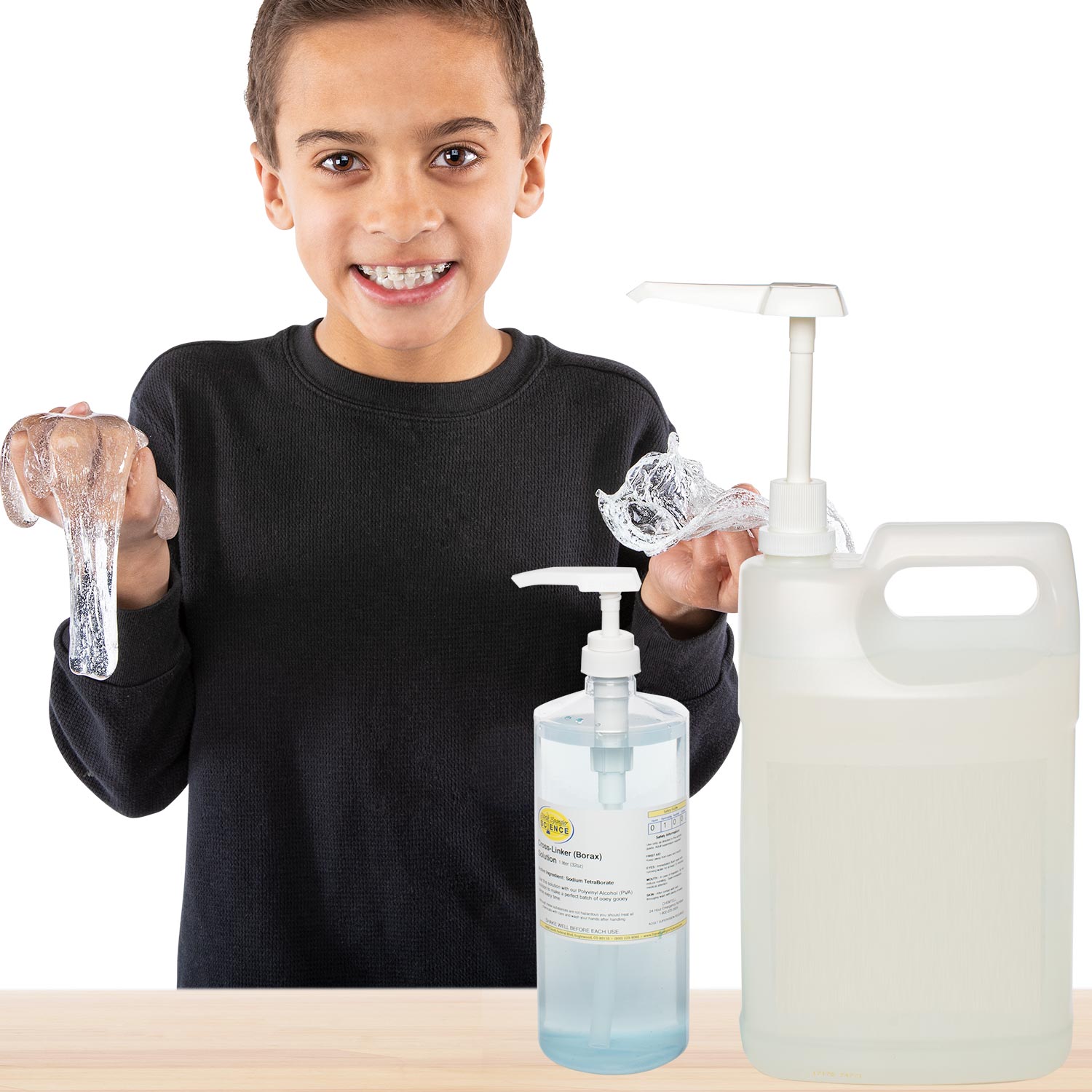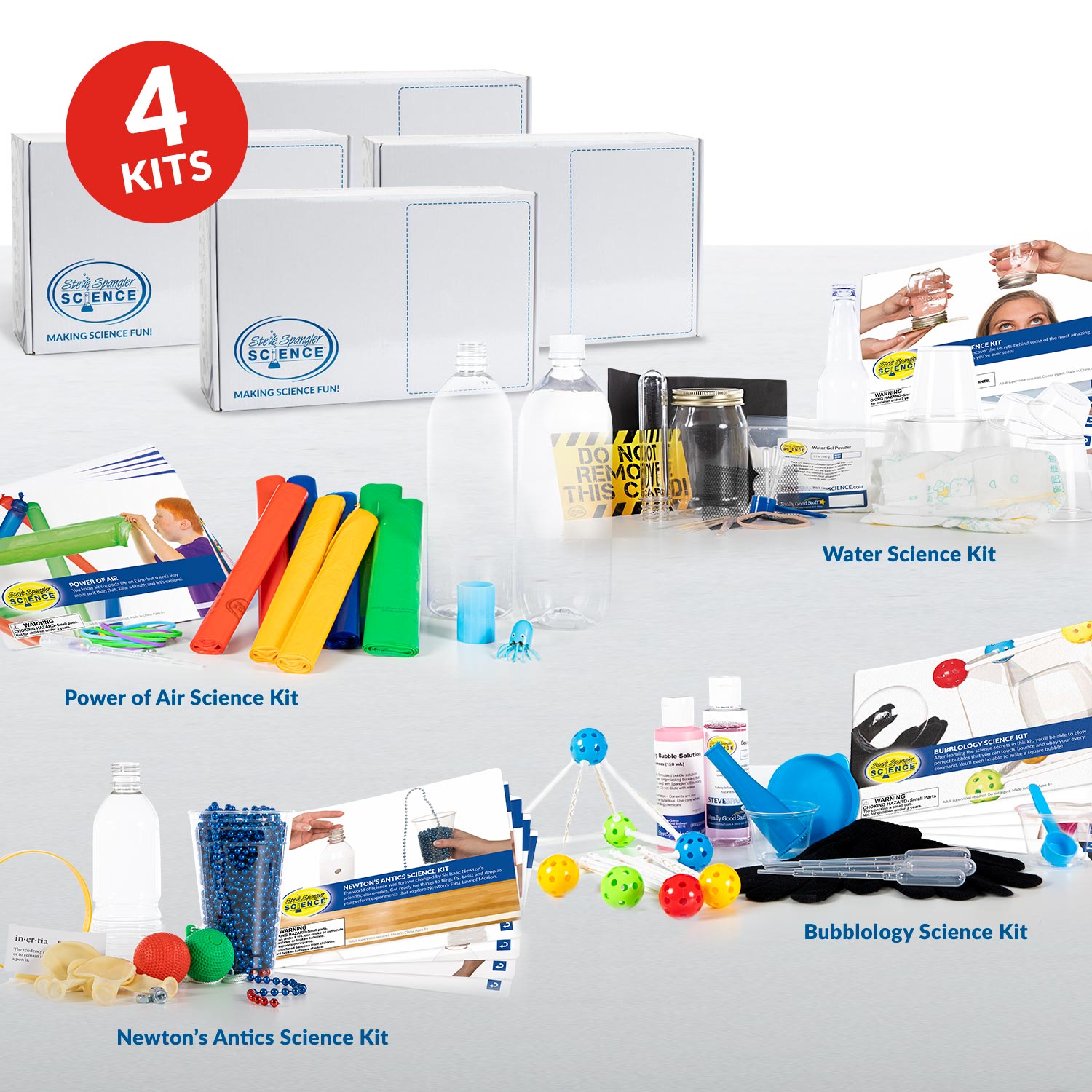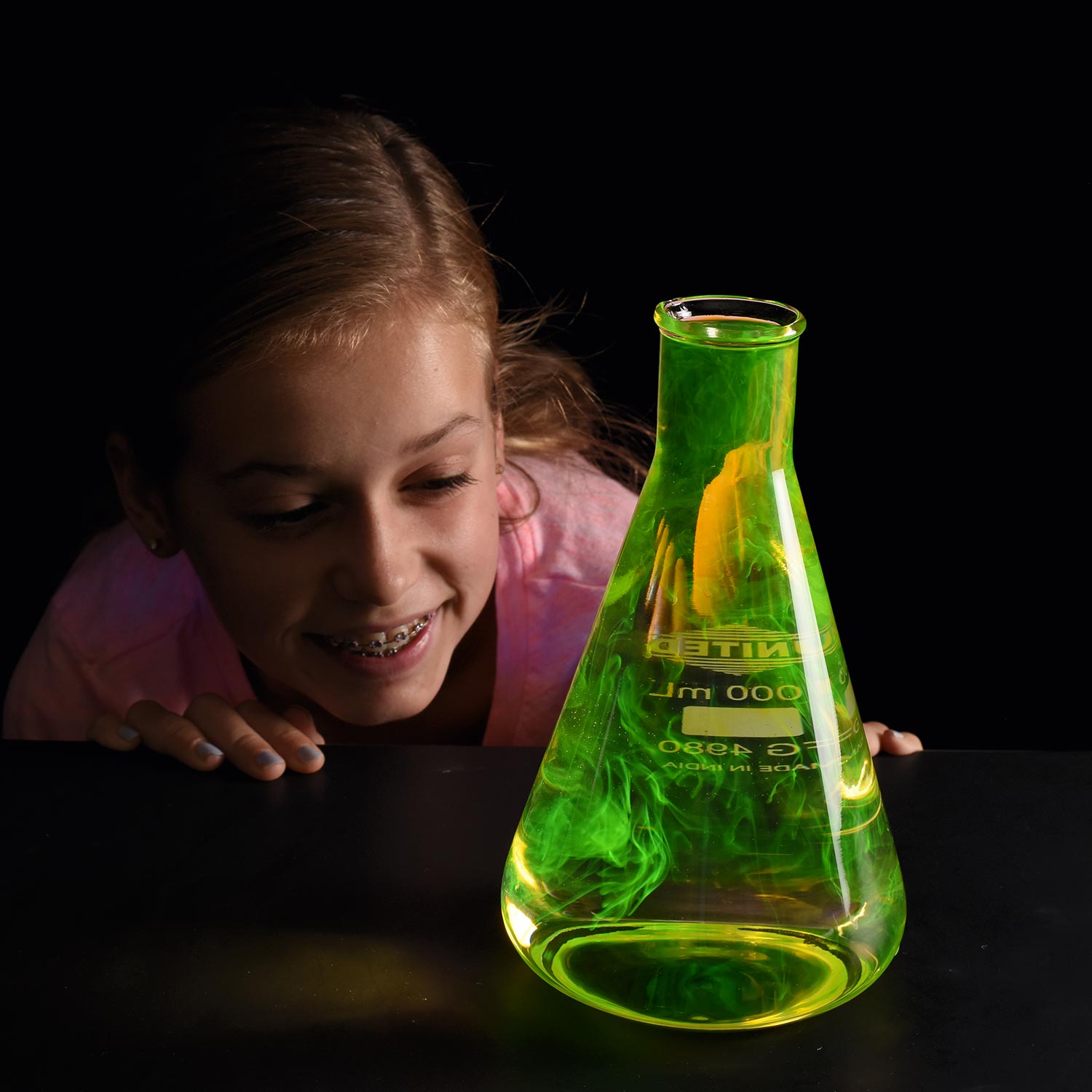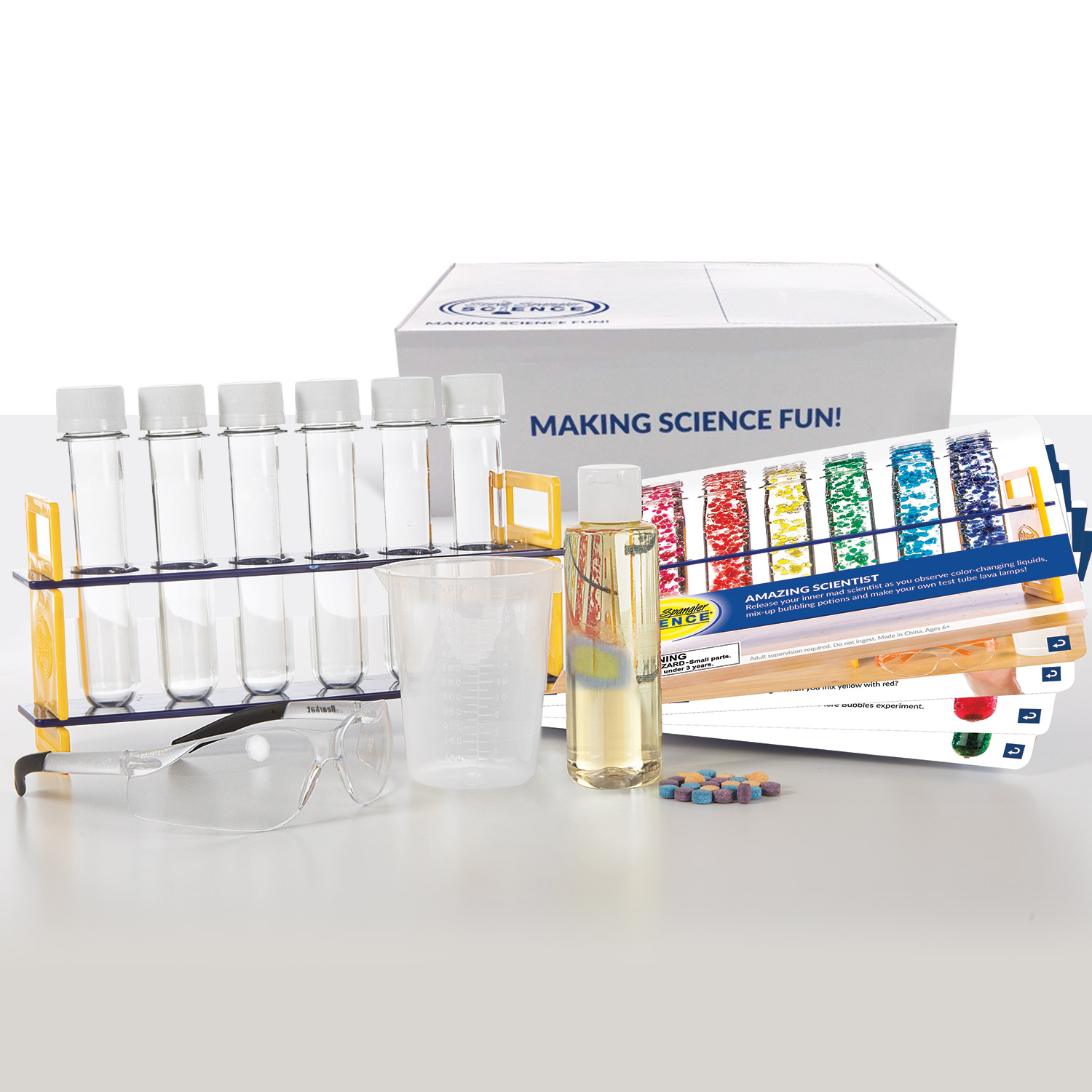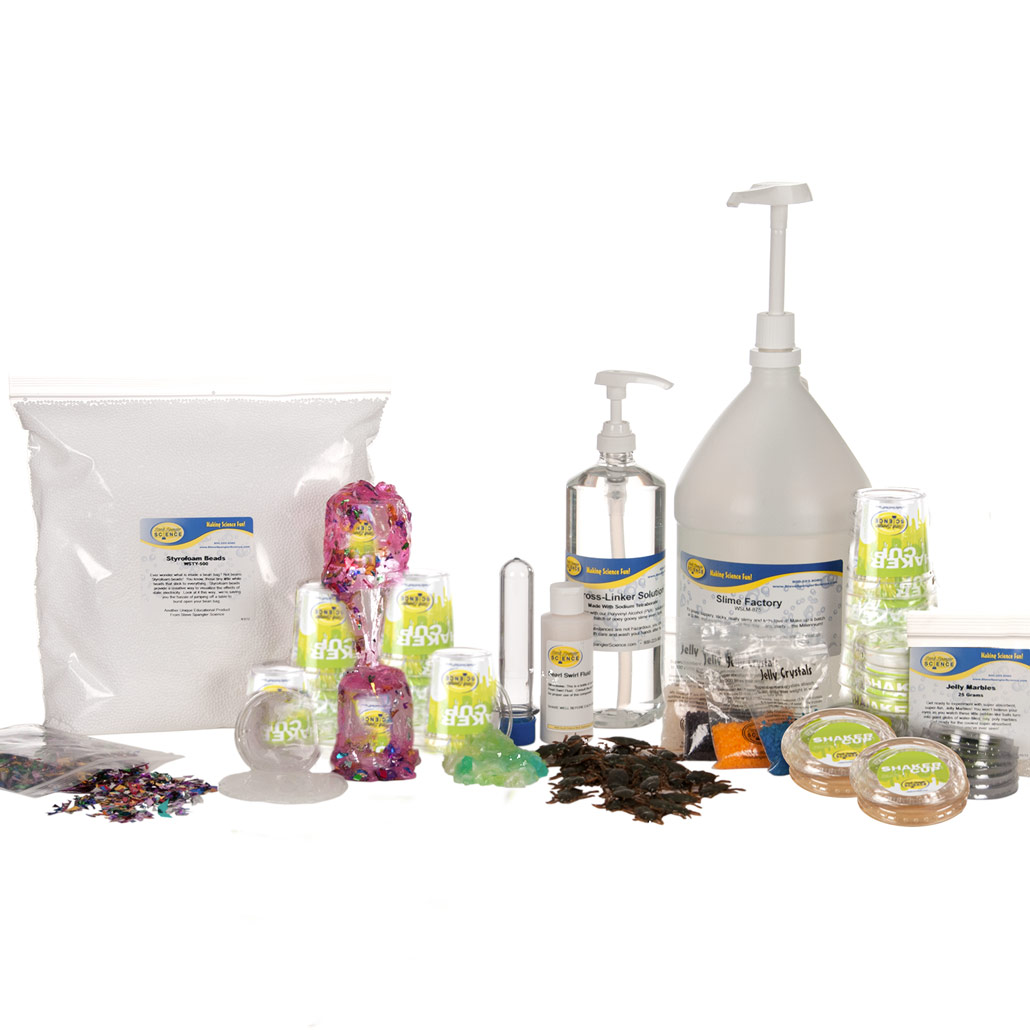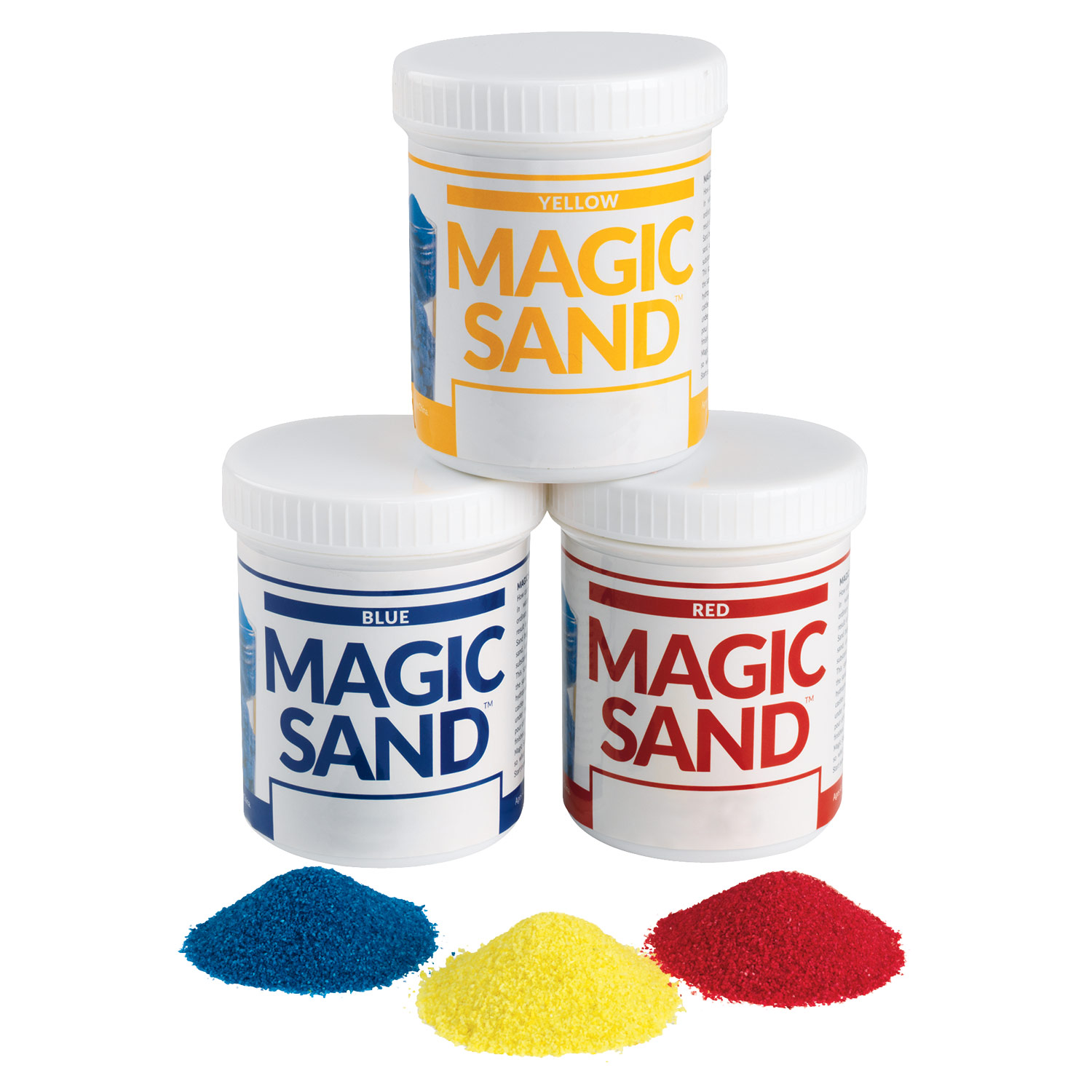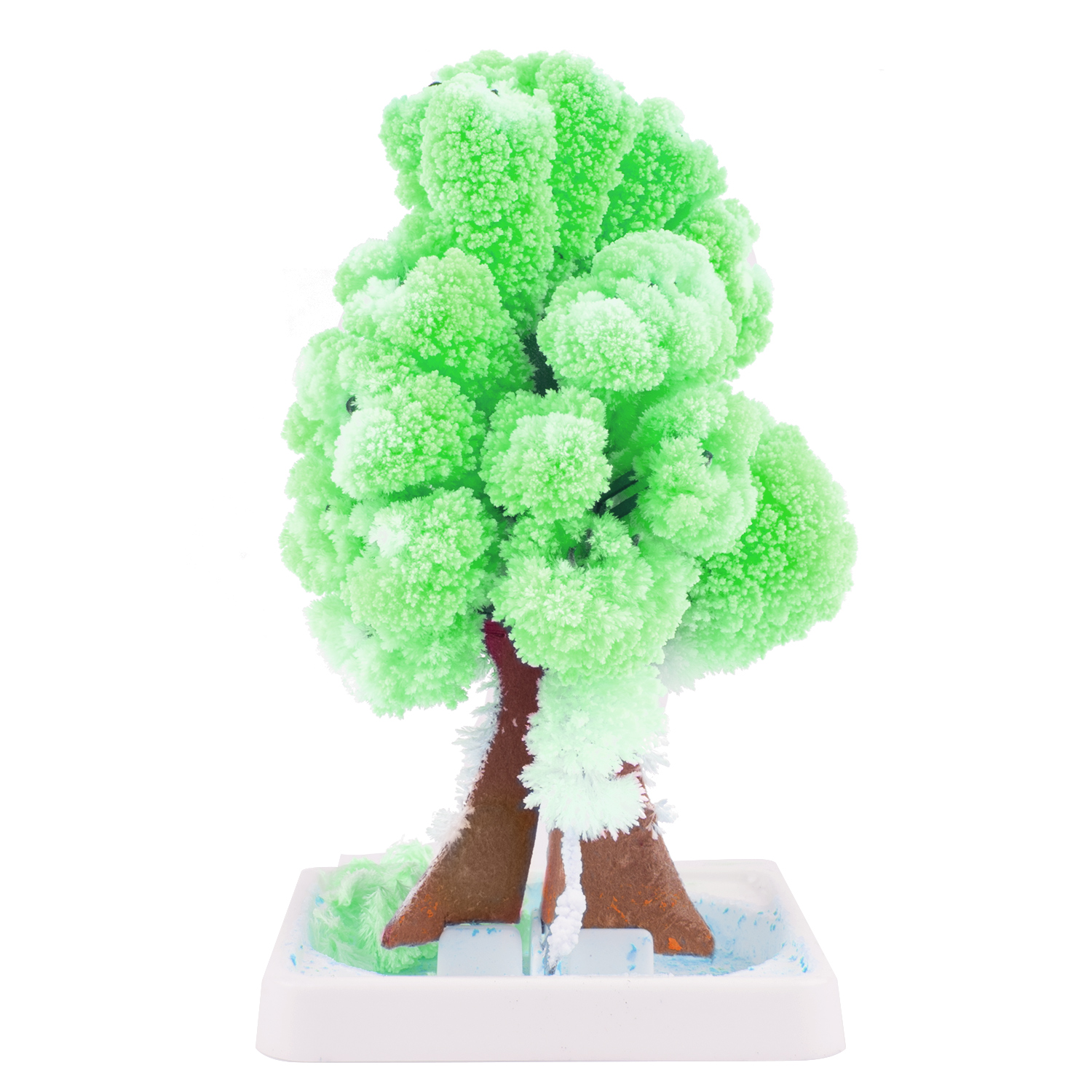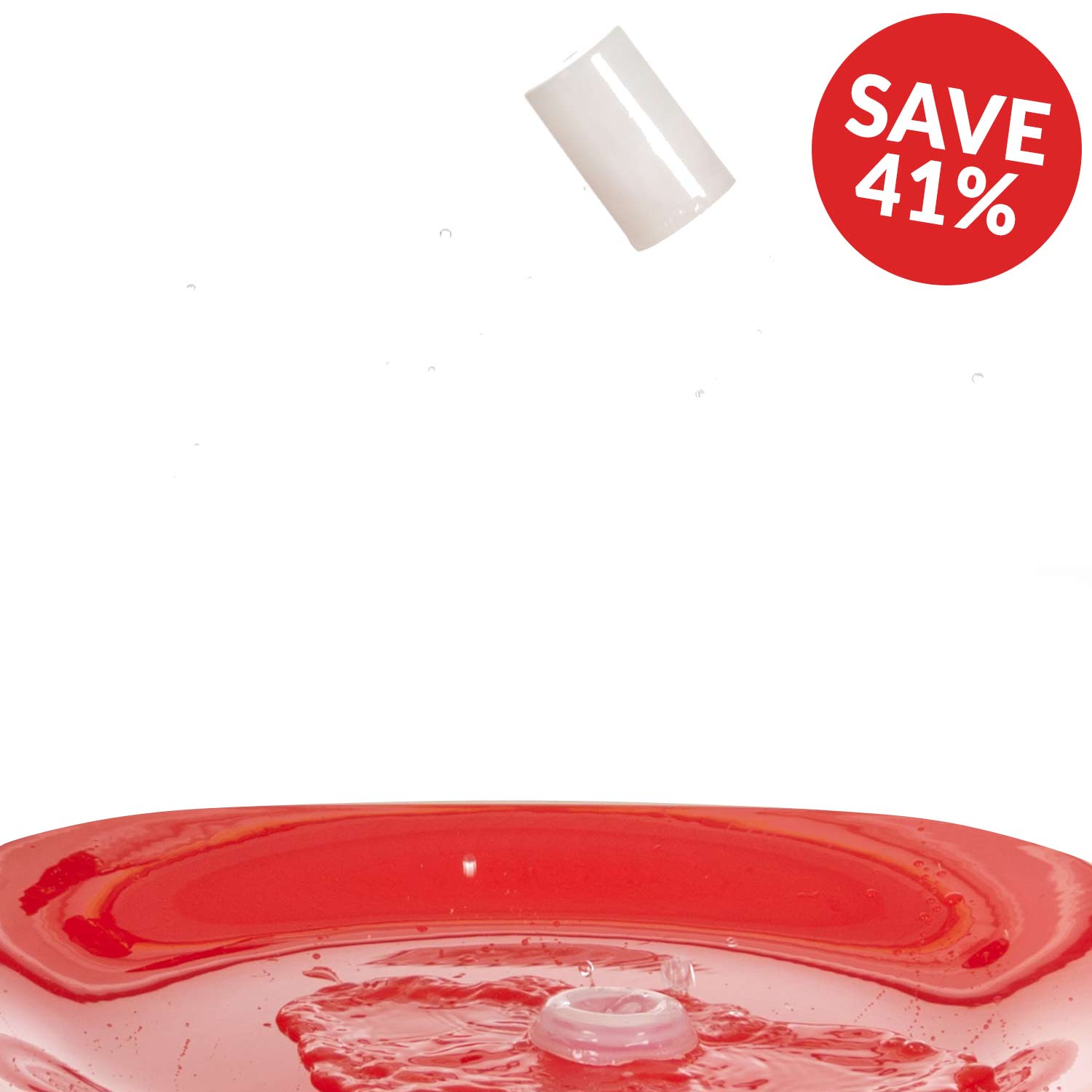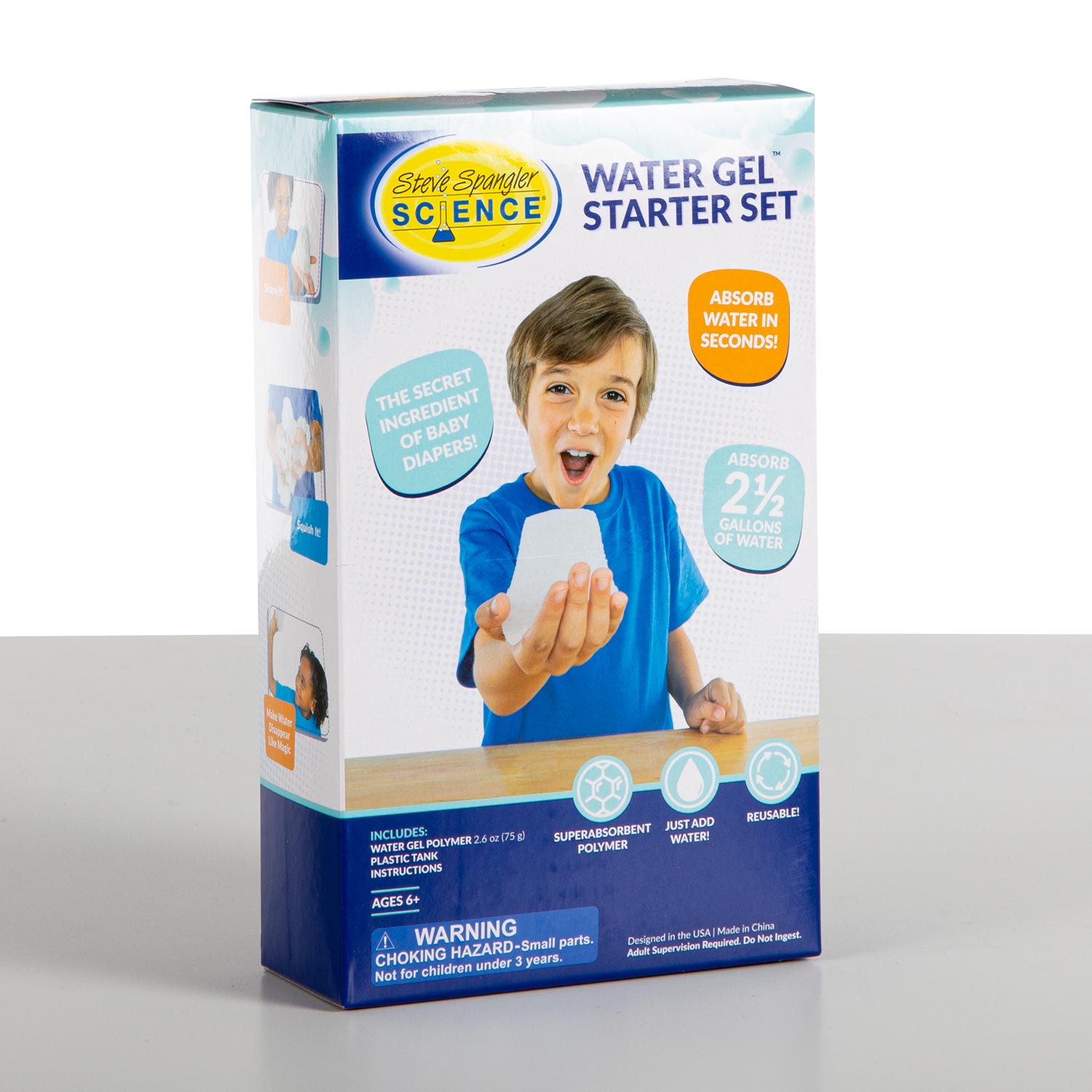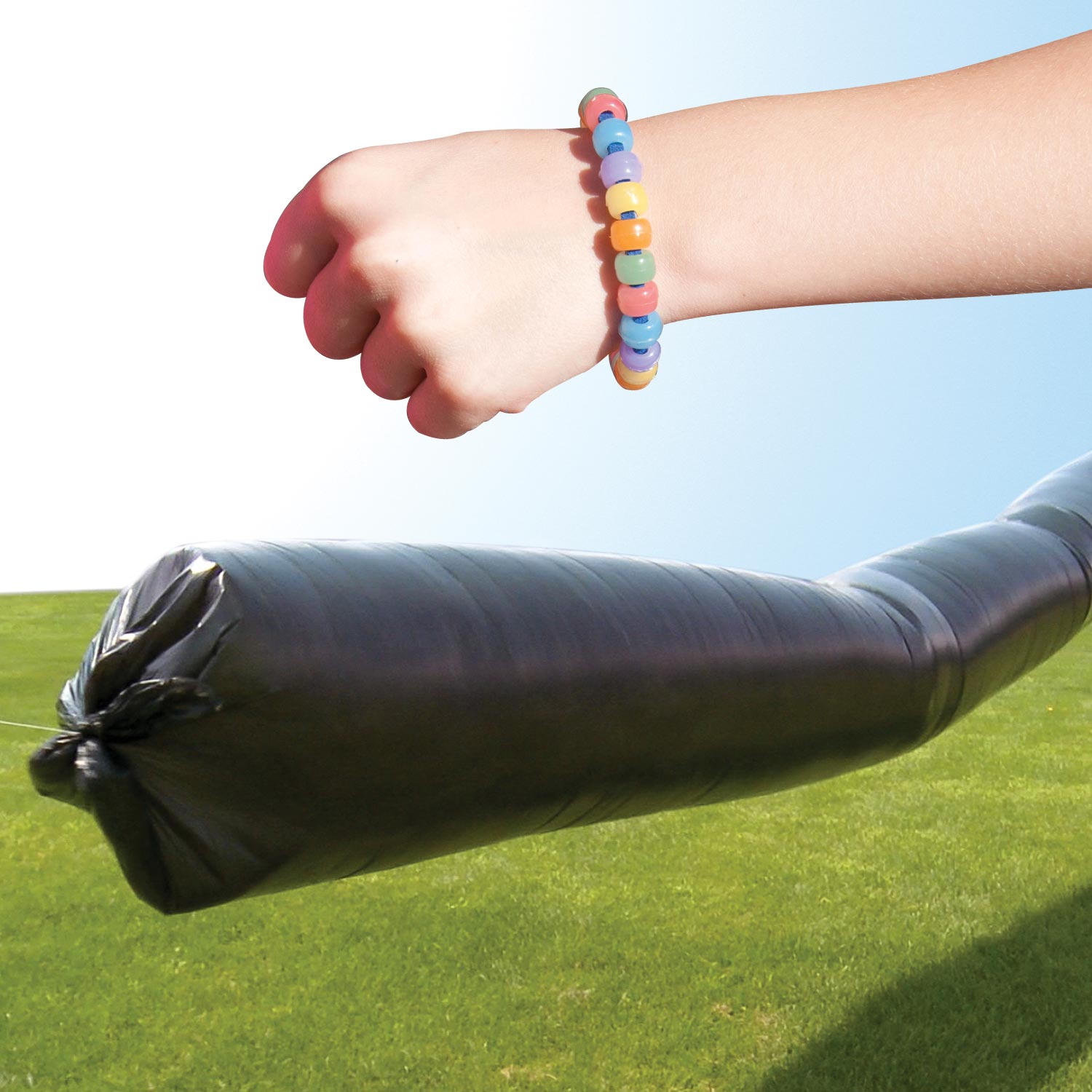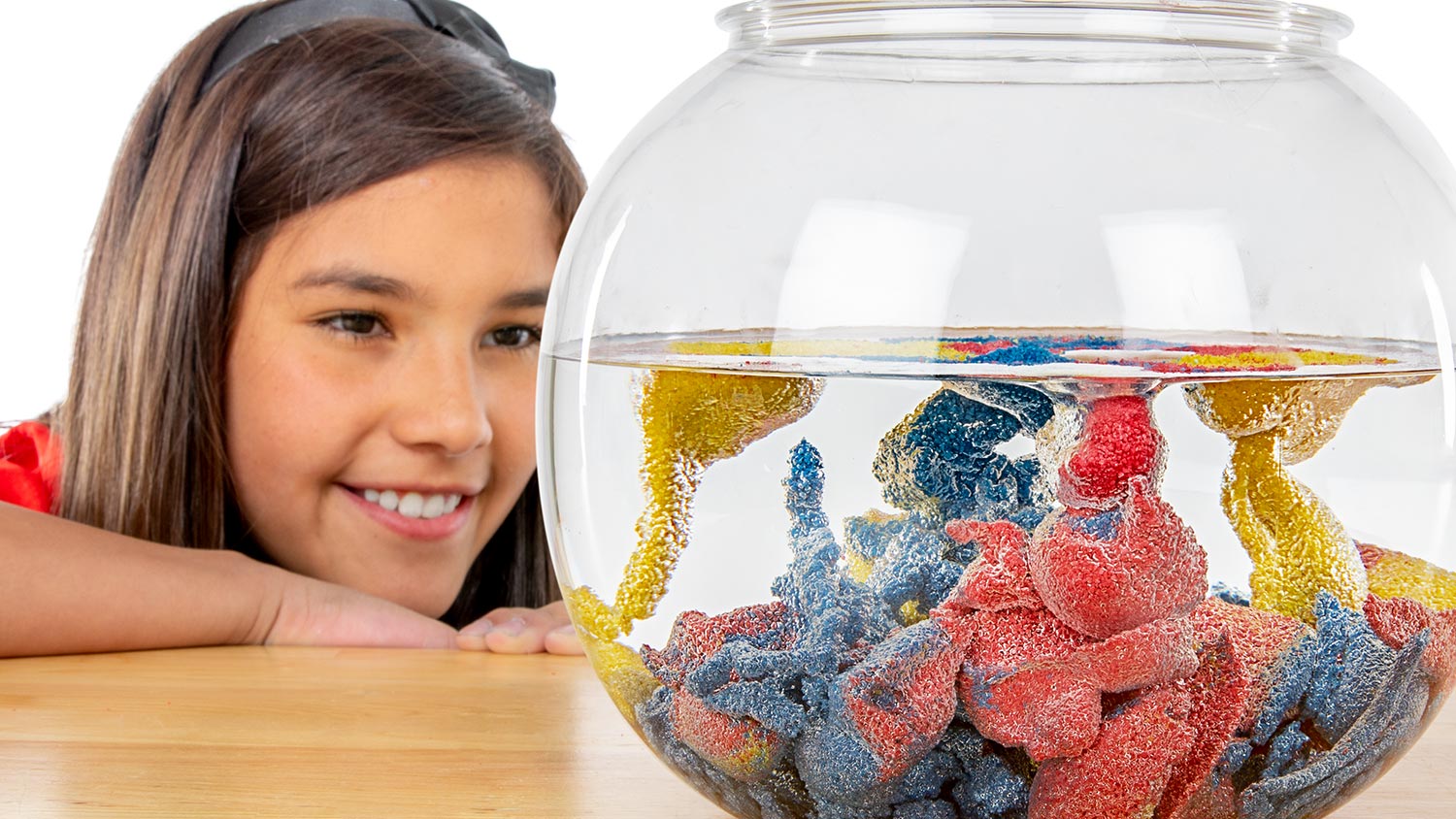
Magic Sand
How can something submerged in water stay dry?
How can something submerged in water stay dry? When ordinary sand gets wet, the result is a clumpy mess. However, “Magic Sand” begins as normal looking sand, until it’s coated with a substance that repels water. This special coating keeps the sand dry even after it has been dumped into a container of water. Build castles and other structures under the water, then simply pour the water off when you’re finished and the sand is still dry!
Experiment Materials
- Magic Sand
- Regular sand
- Water
- Cups
- Plastic soda bottle
- Vegetable oil
- Food coloring
- Plastic spoons
Experiment Videos
Experiment
What Makes Magic Sand Magic?
- Fill a cup 3/4 full with water.
- Slowly pour Magic Sand in a continuous stream into the water. Look closely at the sand. What is that silver-like coating on the sand?
- Pour off the water from the sand into a second container. Touch the sand and see what you find. To your amazement, the sand is completely dry! To better understand how Magic Sand works, try this demonstration…
- Fill a plastic soda bottle (16 oz works well) 3/4 full with water.
- Fill the remaining portion of the bottle with vegetable oil or mineral oil. Immediately, the students will notice that the oil and water do not mix.
- Add a few drops of food coloring to the mixture. Notice how the food coloring only colors the water and not the oil… even when the bottle is shaken.
How Does It Work?
This is a great demonstration to introduce students to the properties of substances that are hydrophobic and hydrophilic. Hydrophobic substances do not mix with water. The term “water-fearing” is often used to describe the word hydrophobic. Hydrophilic substances, on the other hand, are “water-loving.” Notice how the drops of food coloring color only the water and not the oil. Since oil is hydrophobic, the oil did not mix with the food coloring or the water. What are other examples of oil and water not mixing? A newly waxed car will make water form beads on its surface. Oil from cars will float on top of puddles. Oil and vinegar salad dressings need to be shaken up before using. So, how does Magic Sand work? The surface of sand grains is made wet by water, which means that water molecules are attracted to sand grains. Remember, this water-loving property of sand is called a hydrophilic property. Magic Sand is regular sand that has been coated with an oil-like substance that is water-hating or hydrophobic.
Additional Info
Regular Sand vs. Magic Sand
For this activity you’ll need a small amount of regular sand and Magic Sand. Fill 2 cups with water. Use a spoon to sprinkle a small amount of regular sand into one of the cups. Notice how the sand immediately sinks. Sprinkle a thin layer of Magic Sand on the surface of the water in the second cup. Why does the Magic Sand float on the surface whereas the regular sand sinks? The surface of the regular sand grains is made wet by water, which means that water molecules are attracted to sand grains. Magic Sand is regular sand that has been coated with an oil-like substance so it is water-hating. The Magic Sand grains like to stay in contact with each other. Also, the surface tension of the water makes the Magic Sand float.
Making Magic Sand Wet
Pour a small amount of Magic Sand in a cup of water. As expected, the Magic Sand stays dry. Add about 12 drops of liquid detergent to the water and use a spoon to stir the mixture. Soap breaks down the oil coating on the sand and lowers its hydrophobic properties. Adding soap removes the “magic” from Magic Sand and causes it to behave like regular sand. The secret is revealed!
Other Uses for Magic Sand
The coating on Magic Sand is like Scotchguard, which is sprayed on fabric to protect it from stains. Magic Sand was originally developed as a way to trap oil spilled from oil tankers near the shore. The idea was that when Magic Sand was sprinkled on floating petroleum, it would mix with the oil and make it heavy enough to sink. This would prevent the oil from contaminating beaches. However, it is not being used for this purpose, perhaps because of the expense of making Magic Sand. Another potential use of Magic Sand is to bury junction boxes for electric and telephone wires in the Arctic in order to protect the utilities from the extreme cold temperatures but make it easy to dig up for repairs. Normal earth is frozen so hard because of moisture content and it is difficult to dig. However, Magic Sand remains dry and is easy to dig, regardless of how cold it is.
Science and Literature Connection
Experimentation with Magic Sand is fascinating. You might begin by reading the story Johnny Castleseed written by Edward Ormondroyd. After introducing the story, have the students experiment with different types of sand (beach sand, colored sand, etc.). Let them mix sand and water and feel the sand. Ask them why it feels wet. Then it’s time to introduce Magic Sand.
Information for this experiment was based on articles by
J. Chem. Educ. 2000, 77, 40 A
ChemMatters 1995, 13(1), 14-15
Institute for Chemical Education, SSC, 1997
Celeste Bunting, Worcester Country School, Berlin, Maryland
Dr. Melvin Joesten, Faculty Advisor of VSVS, Vanderbilt University
Pat Tellinghuisen, Coordinator of VSVS, Vanderbilt University



